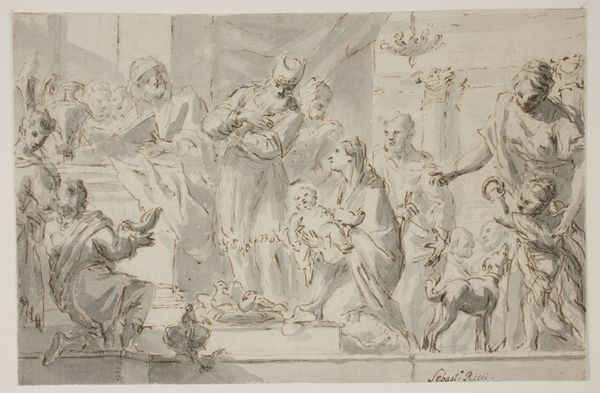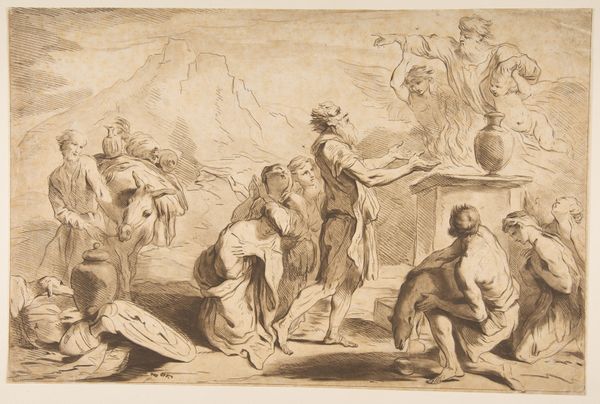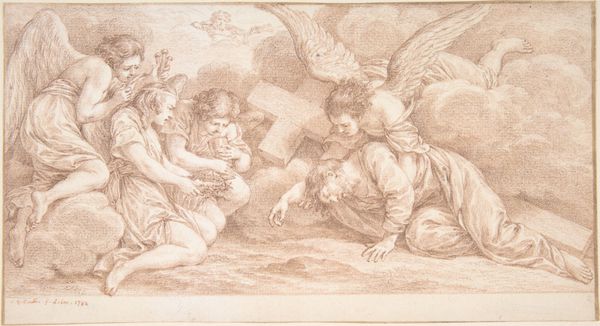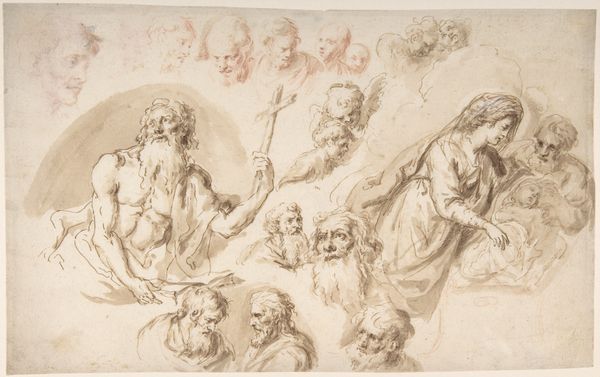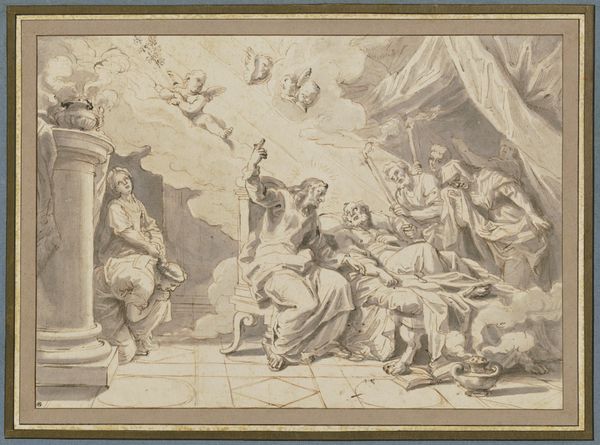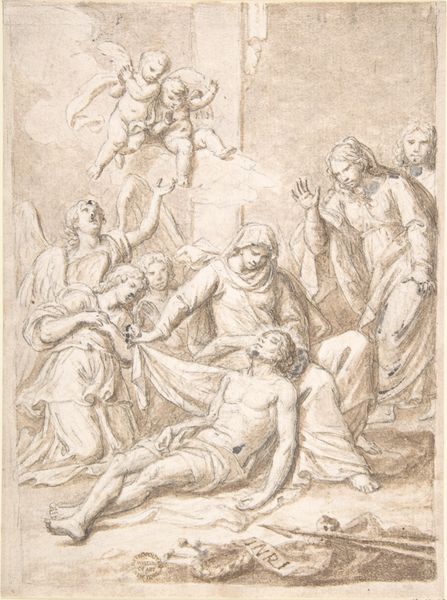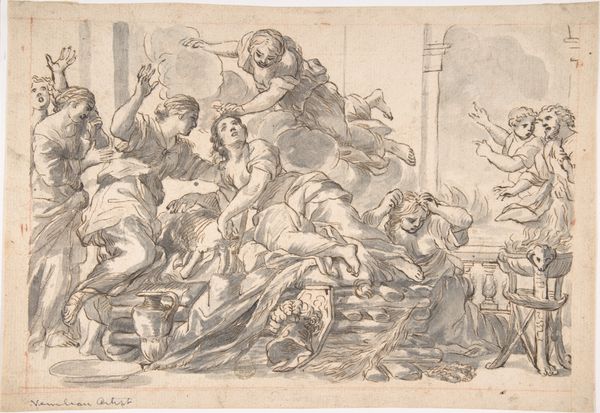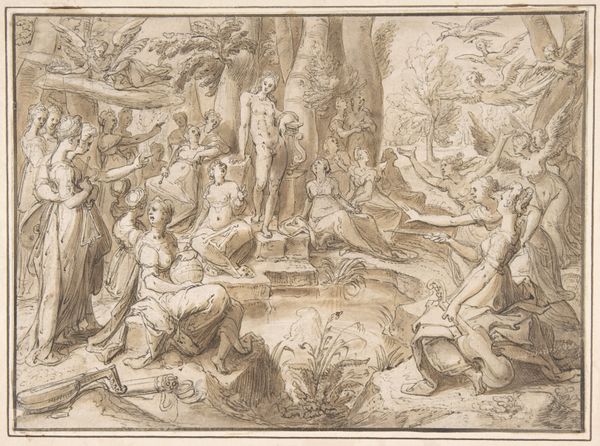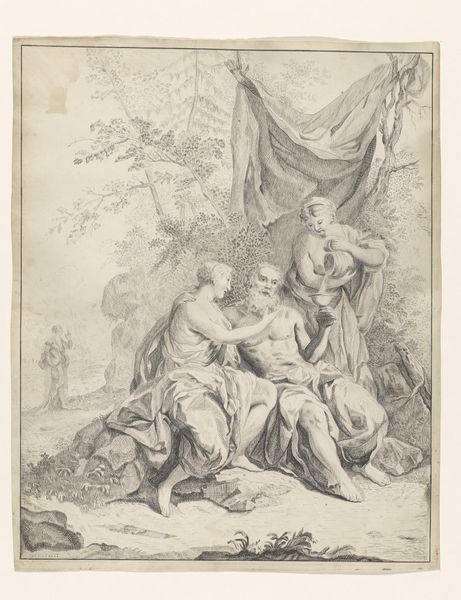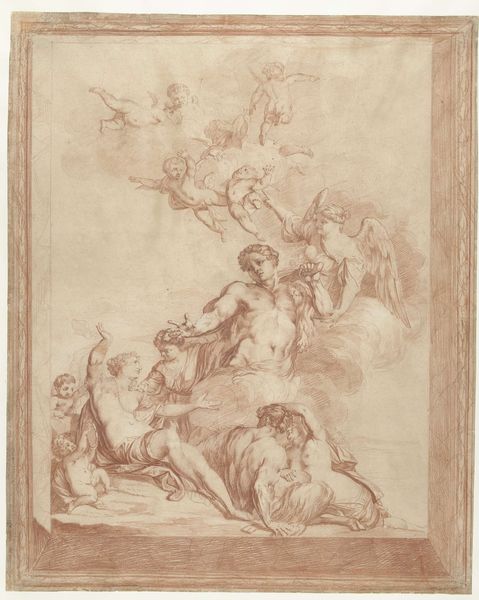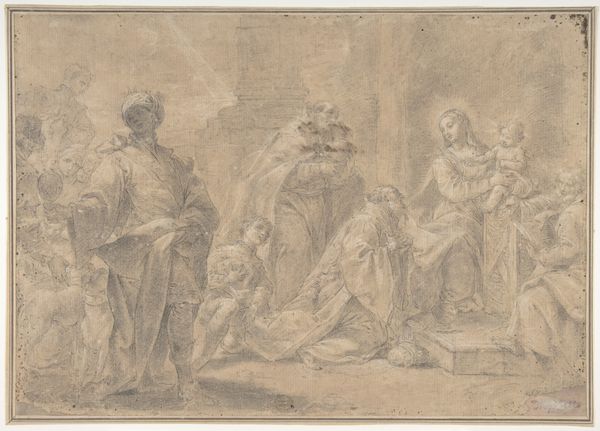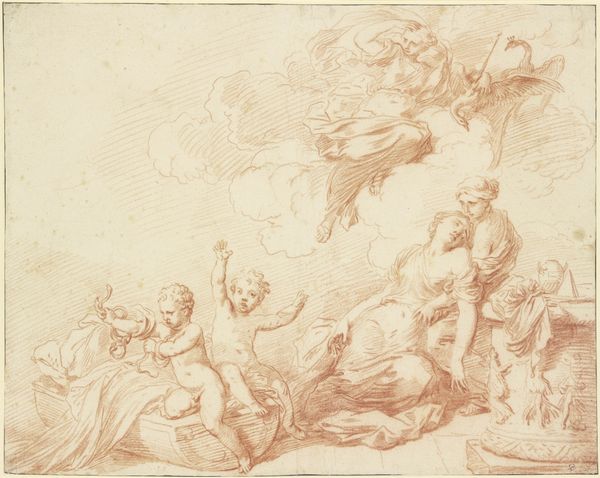
Amoretten halten ein Tuch, rechts Minerva, links Herkules und Mars
0:00
0:00
drawing, ink
#
portrait
#
drawing
#
baroque
#
pen sketch
#
pencil sketch
#
ink
#
14_17th-century
#
history-painting
Copyright: Public Domain
Editor: This ink drawing, likely from the 17th century, is called "Amoretten halten ein Tuch, rechts Minerva, links Herkules und Mars" by Bernard Picart. The figures feel weightless, almost floating, because they’re situated on clouds. There’s a blank cloth held by cherubs in the center. What can you tell me about it? Curator: This is a fascinating study in classical symbolism. Notice how Minerva and Mars flank this central, empty space. Minerva, goddess of wisdom and strategic warfare, is counterpoised with Mars, representing brute force and the chaotic nature of battle. What feeling do those oppositions elicit for you? Editor: It feels… unbalanced? Like two sides of an argument frozen in place. And is that Hercules next to Mars? Curator: Indeed. Hercules embodies strength and heroic virtue, but his placement also evokes the psychological concept of the shadow self – repressed or less desirable aspects of the personality. His proximity to Mars, the god of war, further reinforces a dialogue around strength and its potential for destruction or creation. Editor: And what about the blank cloth? It almost feels like a screen onto which something is supposed to be projected. Curator: Precisely! That "screen," held aloft by Amoretten, speaks to the blank slate of potential. What narratives, what ideals are *we* meant to project onto it? Think about the power dynamics, how classical ideals are continuously reinterpreted. This drawing asks us to consider what stories we choose to elevate. Editor: So it's not just about the gods themselves, but about how we use their images and stories to understand ourselves? Curator: Exactly. The piece prompts questions rather than providing answers, inviting viewers to engage actively in the cultural memory these figures evoke and our understanding of history. Editor: I see the artist forces you to be a participant rather than just a viewer. Thank you for enlightening me.
Comments
No comments
Be the first to comment and join the conversation on the ultimate creative platform.
